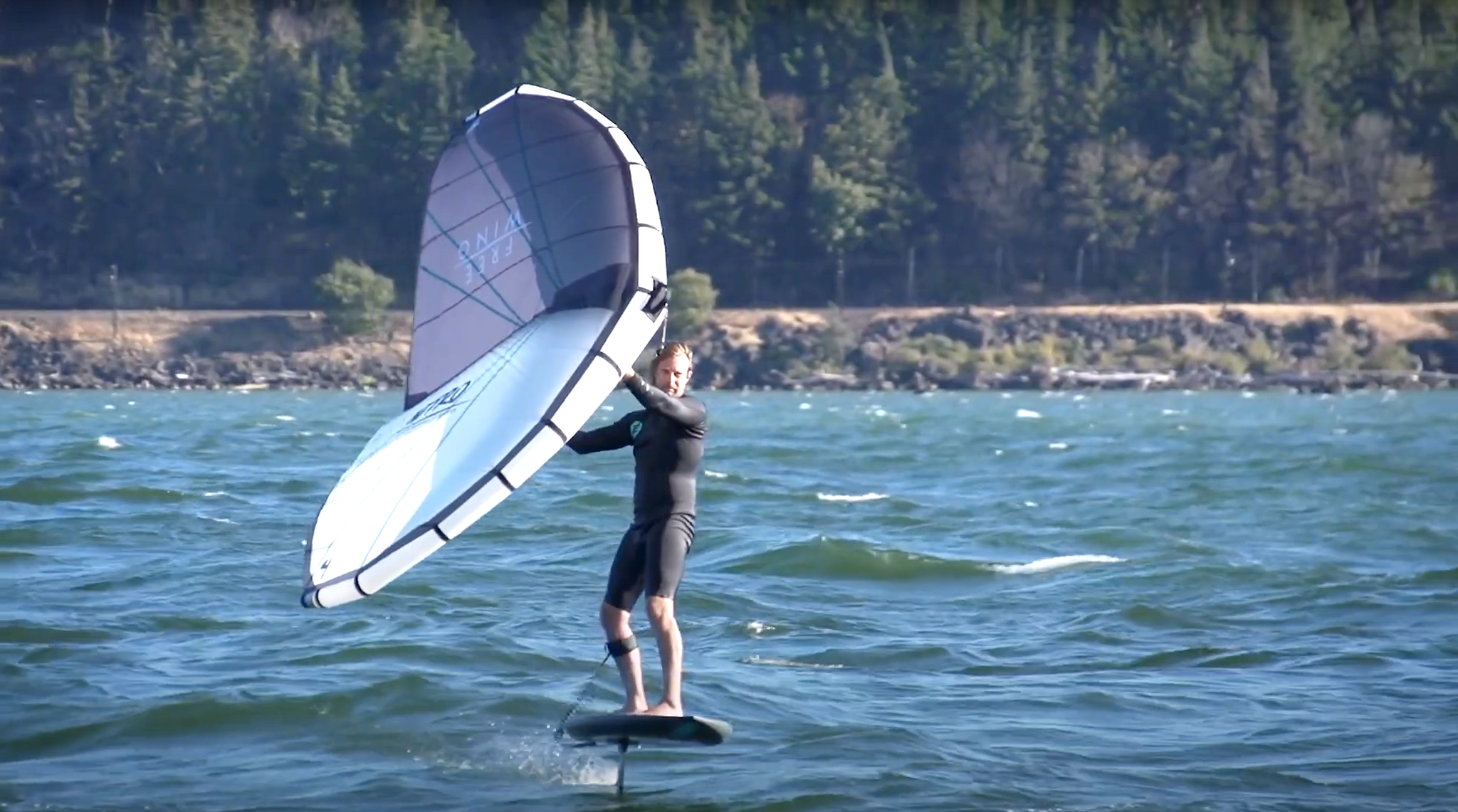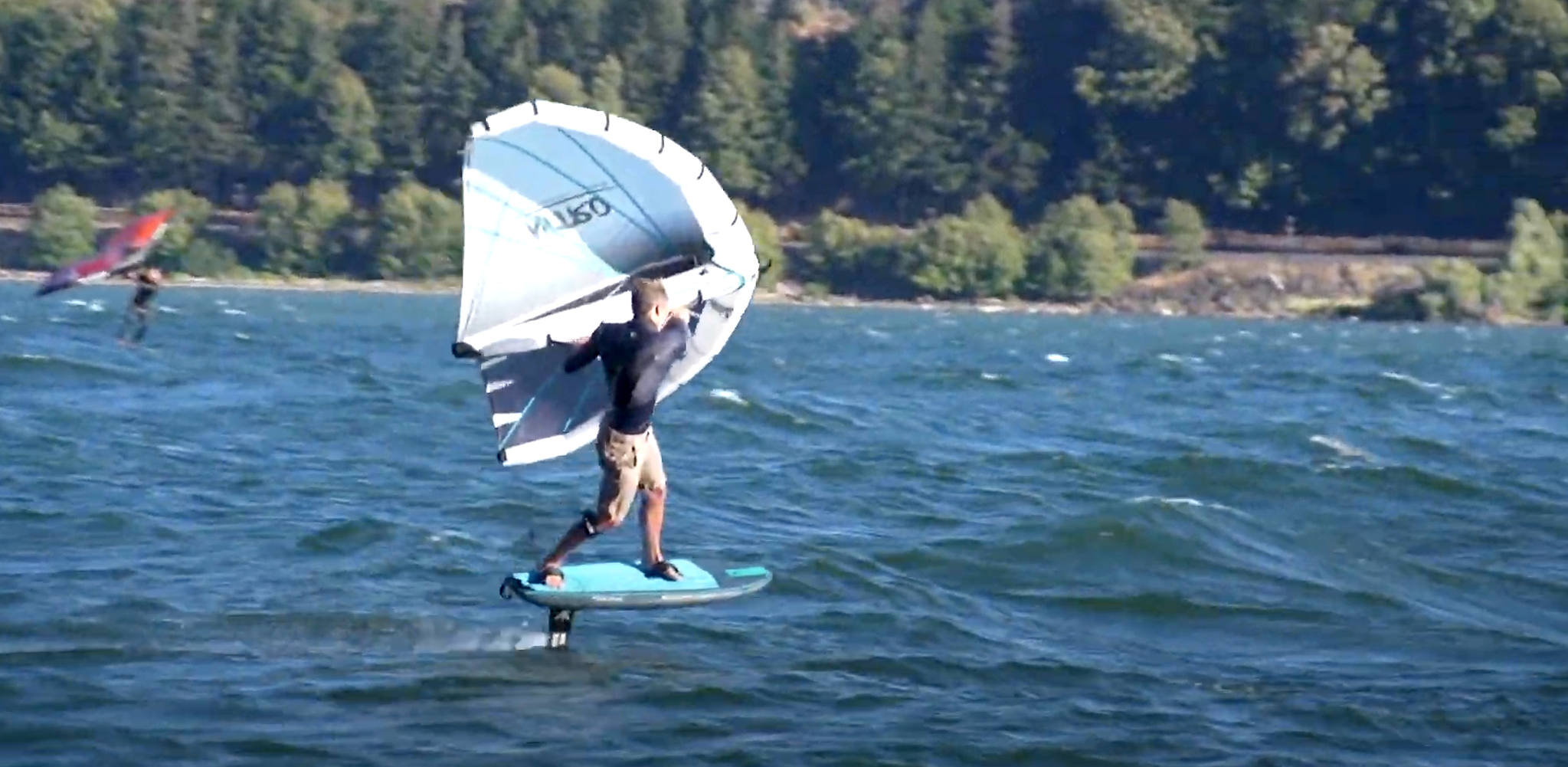Wingfoil – When Should I Switch to a Smaller Board?

Wing foiling has come a long way, and as more riders progress, the question of when—and how—to size down becomes more relevant. In recent testing in Cocoa Beach, we found that choosing the right board and foil can make a difference when moving to smaller wingboards.
Switching to a smaller wingfoil board can unlock new levels of fun and performance, but knowing when to make the switch and how to do it is important. In this blog, we’ll break down everything you need to know about sizing down your wingboard—whether you’re a beginner or an intermediate rider looking to take the next step.
Wingfoil – When Should I Switch to a Smaller Board?
Wing foiling has come a long way, and as more riders progress, the question of when—and how—to size down becomes more relevant. In recent testing in Cocoa Beach, we found that choosing the right board and foil can make a difference when moving to smaller wingboards.
Switching to a smaller wingfoil board can unlock new levels of fun and performance, but knowing when to make the switch and how to do it is important. In this blog, we’ll break down everything you need to know about sizing down your wingboard—whether you’re a beginner or an intermediate rider looking to take the next step.
You’ll learn why sizing down matters. We’ll also discuss the practical benefits of smaller boards. We'll touch on how wingboard shape impacts performance and why a well-designed smaller wingboard can be easier than something with higher volume. We'll share what to expect when sizing down and some practical tips we learned along the way.
We’ll also hit common questions like "Should I size down my wing board or foil first?" and the pros and cons. While running demos, we found some smaller front wings can offer a surprising blend of stability and agility. You'll find tips on adjusting gear based on your skill level and experience.
There's a lot to cover, so feel free to skim to any relevant section.
- The Benefits of Sizing Down Your Wingboard
- Key Benefits of Sizing Down on a Wingboard
- How Much Volume Should I Drop When Sizing Down?
- What’s More Important to Size Down First: The Board or the Foil?
- Our Favorite Wingsurf Board for Sizing Down
- How Do I Choose a Smaller Wingfoil?
- Takeaways from the Demos in Cocoa Beach

Benefits of Sizing Down on a Wingboard
- Reduced Swing Weight: Smaller boards are more responsive and feel less bulky, like you’re riding something fun rather than a boat. You’ll notice how much more connected you feel to the foil and how much fun they are to ride.
- Easier to Travel With: Shorter boards take up less space in your car and are easier to carry to the beach. They’re also much less cumbersome for air travel, especially when packing your gear for longer trips. Airline fees get out of control for oversized bags.
- Improved Pumping: Shorter boards pump better due to their compact size. With less surface area, you can transition from paddling to foiling faster, giving you more control when pumping the board for speed.
- Experience Matters: Riders with a background in sports like kitefoiling are more likely to tap into the benefits of sizing down sooner. If you’re used to riding a pocket board while kitefoiling, you might start with something like a 110L board for wingfoiling, but sizing down quickly to a 78L or even 65L board is realistic. For example, I made the leap from a 140L to a 78L board but soon realized that 65L was the sweet spot. My background in kitefoiling helped me progress faster, even though I still experienced a “J-curve,” where I felt worse before getting better.
How Much Volume Should I Drop When Sizing Down?
When should I size down? Riders often stay on larger wingboards for stability longer than they need to. It depends on where you are at and how often you get out. If you're able to get up on foil every time in all conditions, it might be time to take a step down. General recommendations are to go 20 liters less than you were using. Going more will increase the learning curve for the transition.
When riders think about sizing down, they often focus on volume, but the board’s shape can matter more than the raw volume. If you’ve ever ridden a board shaped like a bar of soap, you know how tricky it can be to balance. On the other hand, something longer and narrower with a fast takeoff can feel much more stable, even at a lower volume. Modern wing boards, like the AK Phazer, are designed to make sizing down easier—you can often go a little smaller than you think.
Practical tips for sizing down: With a board like the Ak Phazer the learning curve is still there, particularly regarding side-to-side stability. However, with the right approach and technique, you can manage smaller boards and progress faster.
One trick that many riders use is to maintain multiple points of contact. By keeping your wing on the water and one hand on the nose before bringing the wing up, you maintain stability through the transitions. If you’re switching hands, try to get one back on the nose as quickly as possible. Staying tucked, with your chest low and your knees on the board, also helps maintain stability in those early stages of the ride.
After some recent demos, it became clear that you can size down a little more if the board is shaped right. One rider, typically on a 90L wingboard, was surprised to find that he could comfortably ride the 65L AK Phazer after just a few attempts. The Phazer’s design sets it apart, offering sharp rails and a quick takeoff, which allows for a smaller board without sacrificing control or speed. It's surprisingly stable for its size and user-friendly.

What’s More Important to Size Down First: The Board or the Foil?
A common conversation in foil circles is whether to size down the board or foil first. Most riders stick to the same size foil and downsize the board first, as this approach usually offers a smoother learning curve. However, with the latest generation of foils, it’s sometimes okay to downsize both the board and the foil simultaneously—this is more of a personal choice, but keep in mind that it might extend your learning time.
Consider Your Foil Experience: If you’re coming from a background in kitefoiling or eFoiling with smaller wings—like an 1100cm² or even a 700cm²—then you might be able to start with a slightly smaller front wing. Expert kite foilers can size down sooner.
Choose the right gear: While learning the wing, there’s a massive advantage in starting with something like a next-gen 1600cm² medium aspect wing. Something like the AK Tracer that provides the easy lift and stability needed to learn with a wing. We recommend getting into a foil system and picking up the next step or two. You don't need to get the smallest wings unless you're motivated to charge hard and quickly progress into the waves. Experienced foilers can step down to a 1300cm² sooner than most. Expert kite foilers could consider stepping down to a 1030cm² wing with a few weeks of consistent, diligent practice.
Practice & Consistency Matter: Riders who get more hours on the water consistently can step down faster. If you spend a month at a windy spot where you ride every day, most riders could quickly work down to a smaller board and foil. However, in reality, we often deal with inconsistent wind and conditions at our local spots. So, it’s essential to choose gear that fits your location and the time you can commit to riding. There’s no rush—you can always make your life easier by using a setup that suits your local conditions. There’s no need to push the process too fast; just let your riding evolve naturally.

Our Favorite Wingsurf Board for Sizing Down
What's the best wing foil board for sizing down? The AK Phazer has been a surprisingly good all-around mid-length hybrid wingsurf board. Designed for riders exploring various disciplines, the Phazer’s shape lends itself well to wave riding, freestyle, and forgiving freeride. During testing, we found it accommodates many foil riding styles. Its fast rocker, compact shape, and high volume create a board that’s easy to use yet high-performance.
How Do I Choose a Smaller Wingfoil?
Choosing the right foil is just as crucial when stepping down in board size. Depending on the foil system you are using, you don't want to step down too fast. Higher aspect foils can ask more of the rider. They might stall easier and sometimes are not the most forgiving. The general rule is that if you have to ask, you should play it conservatively.
During testing, the AK Tracer 1300 proved to be an excellent choice for those looking to size down without sacrificing stability. What sets the Tracer apart is its compact wingspan, which offers the stability of a larger foil like a 1400, but with much more maneuverability.
Takeaways from wingfoil demos in Cocoa Beach
Throughout the demo sessions, one thing became clear: Wingsurfing gear like the AK Phazer and Tracer foil offer accessible performance, allowing riders to comfortably step down in size without losing control.
The combination of the Phazer’s sharp rails, fast takeoff, and the Tracer’s balance of stability and compactness proved that downsizing sooner is possible and preferable for those looking to progress.
If you have any questions regarding wingsurfing, Winging in Cocoa Beach or foils call or email us.(321) 406-1964
For help on choosing a wingboard size check out the Ak Phazer Size Chart



Comments
Be the first to comment...